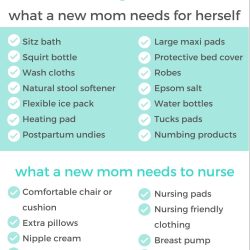Many new moms are eager to get back to their old routines after having a baby, especially when it comes to exercise. Few moms realize that starting a fitness routine post baby means starting from the basics. When we refer to the basics, we mean breathing and your core. We talked to Joanie Johnson to learn a bit more about how we can ease our bodies back into a routine and regain strength the right way.
1. What are the best first exercises for a new mom?
The first thing every mom should do is check in with her breath. For many women, the diaphragm idles during the last stage of pregnancy so that’s the first thing she should concentrate on post birth. Diaphragmatic breathing vs upper chest (aka stress) breathing is step one.
The next thing she should do is check in with her pelvic floor. It may take some time to heal but she should be aware of what she’s feeling and whether or not she can feel a contraction and release of the pelvic floor muscles. Step 3 is to start utilizing her transverse abdominus muscles. This is what’s referred to in the pre/postnatal fitness world as a “belly pump”. Can she lift her pelvic floor and wrap or hug her abdominal muscles close to her body? That pelvic floor lift and belly pump should be used every time she sits, stands, picks up her baby, holds the baby and as she moves through her day to day life. Applying that foundation to all her every day tasks turns her entire day into “workout”. Not to mention, it’s the foundation that takes extra strain off her back, hips, joints, arms, shoulders, etc.
2. If a woman gets exercise clearance at 6 weeks and feels fine, what are some signs it still may not be the best time to resume her pre-pregnancy workouts?
Once she gets the ok from her care provider to start exercising again, she should do so with a certified postnatal specialist. The critical healing period is up to 12 weeks post birth. Those 12 weeks are important for allowing the connective tissue of the abdominal wall (linea alba ) and pelvic floor to make a full recovery.
Too much too soon, even if she feels amazing, could put her at risk for injuries like diastasis recti and pelvic organ prolapse.
Some signs she’s doing too much? Pain, pressure, or incontinence in the pelvic floor and seeing coning or doming through her abdominal wall are major signs that she needs to change her approach and get to a specialist right away.
3. What are the first exercises you can start, postpartum, to strengthen your pelvic floor?
I always recommend that a pregnant or new mom make an appointment to see a pelvic floor PT or OT no matter what type of birth experience they’ve had. Once she’s had that assessment, she’ll know exactly what type of strengthening or release work needs to be done for her pelvic floor. It’s a common misconception that symptoms are a sign that the pelvic floor is “weak” and a woman needs to practice kegels in order to increase strength. What she may need is an exercise regimen or therapy to practice release instead. Symptoms (incontinence, pain, pressure, heaviness) of any kind are a sign that you should see a therapist so you can get the proper diagnosis before you start doing kegels.
4. Can a fitness professional help heal diastasis recti?
Ask lots of questions and value your body by working with a seasoned professional.
Fitness can be a great compliment to helping heal a DR once you are assessed by a PT, OT or specialist. It’s important to inquire about your trainers education and certifications. Ask if they’ve worked with DR clients before? Can you talk to any former clients about their experience? Do they have a trusted network of PT’s and/or OT’s that they also recommend? Can that network vouch for them? DR will be made worse by moving, breathing and exercising incorrectly. Don’t take your trainers word for it. Ask lots of questions and value your body by working with a seasoned professional.
5. Can a belly wrap bring a new mom’s core muscles back together? If so, how?
I always say a big bold NO to waist trainers.
This is a question I get all the time and there are a lot of opposing answers. I always say a big bold NO to waist trainers. A light wrap within the first 6 weeks could be nice for a little extra TCL and warmth but I tell clients not to wear anything for more than 2 hrs a day if they can help it. You are trying to heal your core and pelvic floor. A wrap will become a crutch instead of letting your muscles learn to engage and support your body as they should. A wrap that is too tight also risks putting pressure on your pelvic floor. Another concern is that we want the muscles of your inner core unit to start to move and work through their full range of motion of contract and relax. A wrap is going to prevent that from happening. I always err on the side of, if you don’t need it, don’t use it. Focus on using the proper mechanics of movement as a healing modality instead.
About Joanie
Joanie Johnson
Other Health & Wellness topics
How to get started with post pregnancy fitness


